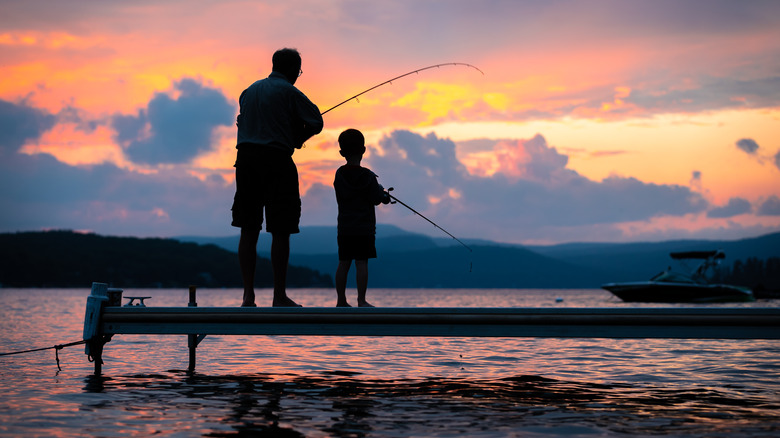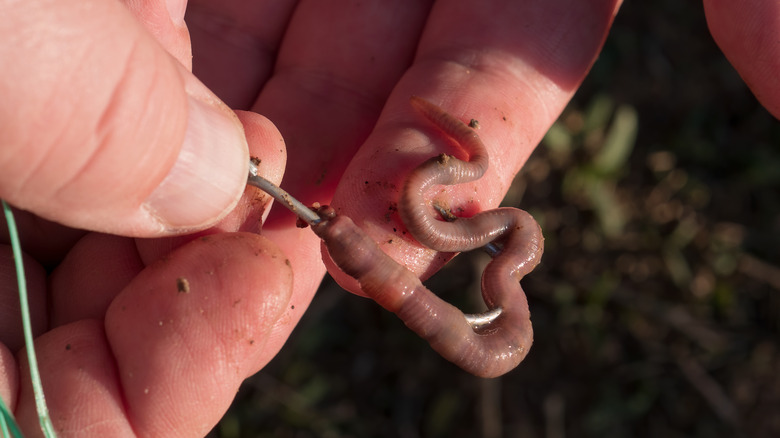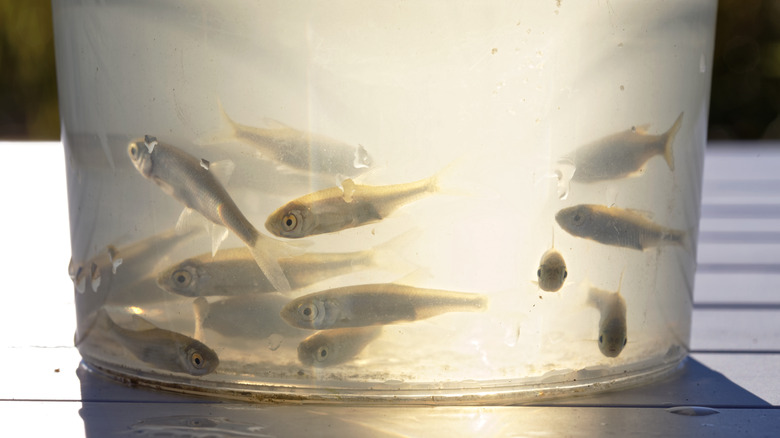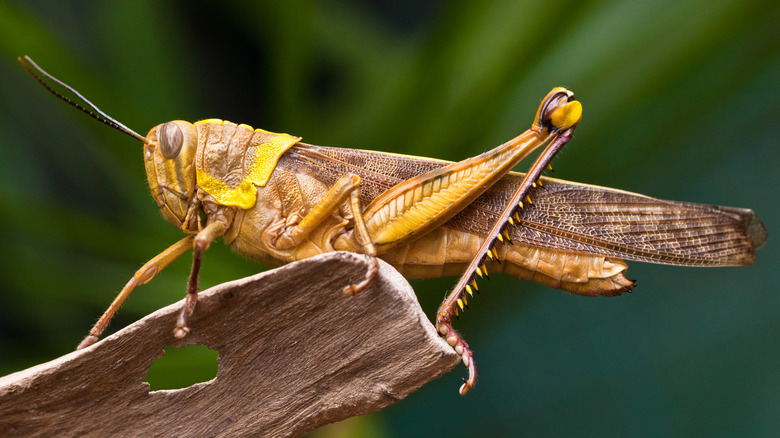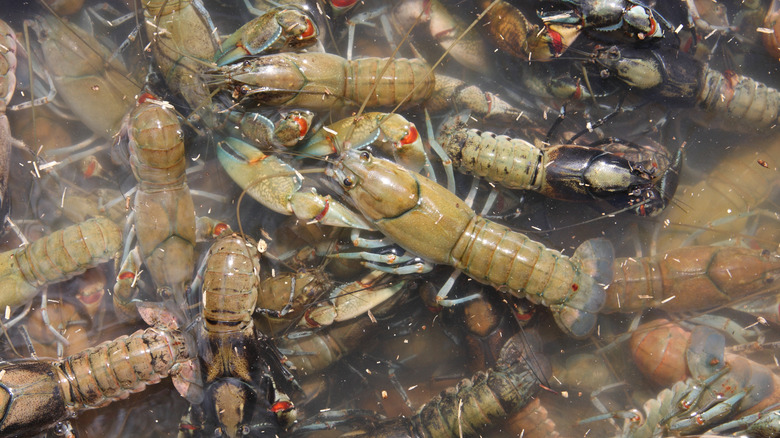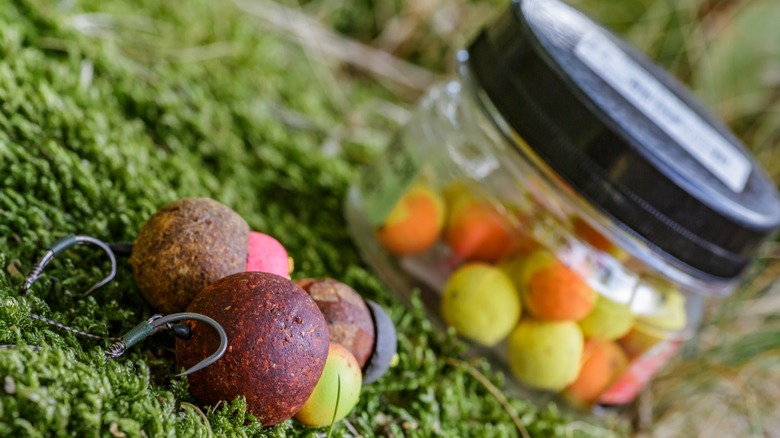The Best Bait To Use When Freshwater Fishing
Virtually everyone in North America lives within relatively close proximity to a body of fresh water that holds a variety of fish species. So it's no surprise fishing in these freshwater creeks, rivers, streams, ponds, and lakes is a popular pastime. Particularly during warmer weather, casual and fanatic anglers alike spend much of their time daydreaming about the best time to go fishing.
However, once the opportunity to hit the water presents itself, one of the biggest mistakes fishermen make is not being prepared with the right bait. While it is possible to get very technical with bait choices, one of the biggest attractions to freshwater fishing for many is the ability to keep it simple and still catch at least a few fish. So, with that in mind, what is the best bait to use when freshwater fishing? That, too, can be a bit nuanced based on location, target species, etc. There are a lot of bait choices, including some that are downright strange fishing baits. However, there are a handful of freshwater baits that will produce good catches of a variety of species on practically every body of fresh water.
Worms catch almost everything
Worms are one of the most widely used freshwater fishing baits. This is because just about every species that swims in freshwater will eat a worm, including bass, trout, panfish, walleye, catfish, and freshwater drum. Worms are also extremely easy to collect or buy, very portable (think of the iconic image of the young boy with a can of worms in hand), and easy to keep alive. They are also very simple to rig, as they need only be threaded onto the hook.
There is also a wide variety of worms that can be used as bait. Earthworms are pretty universal. However, various types of worms and grubs exist regionally. It's a good rule of thumb to use what is found naturally in the area and to match the size of the worm to the fish being targeted (e.g., small worms and grubs for panfish, jumbo nightcrawlers for catfish).
Regardless of the type of worm used, they are typically fished either on a bottom rig or beneath a bobber, depending on the habits of the species of fish you intend to catch.
Minnows make many fish hungry
Minnows are another very effective and versatile bait option for freshwater fishermen. Most larger freshwater fish eat smaller fish. With minnows being among the smallest of fish, they are eaten by virtually everything. Minnows are considered especially effective for species such as bass (all varieties), brown trout, muskellunge, pike, walleye, and crappie.
Anglers wanting to use minnows as bait can catch their own in a minnow trap or cast net if it is legal to do so in their area. They can also be bought, as most bait shops sell live minnows. Minnows are most effective as live bait, so they are best kept alive in a livewell or bait bucket, although some species, such as catfish, will still eat them dead.
One of the most common — and effective ways — to employ minnows as bait is to hook them slightly below the dorsal fin, which allows them to remain lively and swim freely. Placing a bobber a foot or more above the hook will allow anglers to keep track of the minnow's location and detect when a predator fish grabs hold.
Grasshoppers and crickets catch plenty of fish
Both these insects are effective freshwater fishing bait. For the purposes of this article, they are lumped together because they are similar creatures and attract similar species of fish — and that is to say, they attract a lot of species, particularly in the summertime. Trout, bass, panfish, and catfish are just some of the freshwater fish species that are routinely targeted with grasshoppers and crickets.
Some bait shops sell grasshoppers and crickets, but most often need to be caught or collected by the fishermen themselves. Another option is to purchase them at a pet store that sells them as food for aquarium fish. Regardless of how they are obtained, they can be transported and kept alive in a small wire cage (actually, some are marketed for just that purpose) or a jar or can with air holes.
There are a few methods for attaching crickets and grasshoppers to a hook. Simply threading them on is the most secure way to ensure they stay hooked. This method typically kills the insect, but many fish will still gobble them down. If you want the hopper to stay alive once hooked, it is best to run the hook through the hard collar (just behind the head).
Crayfish catch bass and other species
Known as crawfish or crawdads in portions of the country, crayfish are effective freshwater bait wherever they are found, whether in a rocky stream or a muddy bayou. Crayfish are a renowned bait for both largemouth and smallmouth bass. However, they are also extremely effective for striped bass, catfish, crappie, freshwater drum, and other species.
While most fishermen prefer to catch their own crayfish with a drag basket or sein net, they can usually be purchased at local bait shops as well. Crayfish are typically used as a live bait. They can easily be kept alive in a bucket or cooler with just a small amount of water covering the bottom.
When it comes to hooking crayfish for use as bait, they are most often hooked through the tail meat, with the hook protruding up through the shell. This allows the cray to continue moving in a natural position. Larger specimens can also be live hooked by threading the hook under the thorax. Many feel crayfish are prime for use as live bait during molting when they are soft. While anglers debate as to whether this impacts their effectiveness as bait, it certainly makes them more difficult to keep on the hook. Additionally, many fishermen prefer to remove the claws (or pinchers) before using them as bait. If using dead crawfish for bait, it is best to remove the head and claws and thread just the tail on the hook.
Prepared baits for crappie, catfish, and carp
Another type of freshwater bait that is easy to procure and can produce good results is what is commonly referred to as prepared bait. The prepared baits umbrella is very broad and includes a variety of products. Typically, these baits are commercially made (although various homemade recipes also exist) and labeled for the species they are meant to attract. Crappies, catfish, and carp are the most common targets for prepared baits, although there are also versions available for trout and panfish. Often, these baits come in the form of a ball or nugget but may also be pressed into a variety of shapes. The main advantages of these baits are that they are convenient, easy to pack, and long-lasting.
Additionally, prepared baits are quite simple to use. Anglers need only thread the bait onto the hook and then utilize it in the same manner they would when fishing a natural bait. Most often, this means using prepared baits on bottom rigs or dangling beneath a bobber. Once the day has ended, prepared baits can easily be sealed and stored in a zipper back or sealed container for use on the next trip.
